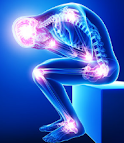September is suicide prevention month
988
988 is the suicide and crisis lifeline formerly known as the national suicide prevention lifeline.
Now you can call and text from your cellphone for access to trained counselors. Also, use this number if a loved one needs crisis support.
JUST TEXT 988 FOR A COUNSELOR.
When someone texts 988, they are responded to by a group of 988 Lifeline crisis centers that answer both chats and texts. This service is currently expanding to increase local and state-level response. Once you are connected, a trained crisis counselor listens to you, works to understand how your problem is affecting you, provides support, and shares resources that may be helpful. Texting is available in both English and Spanish (988 Frequently Asked Questions, n.d.).
DOO 911 AND 988 CORRELATE??
SAMHSA is working towards a long-term vision of strong coordination between the two services so people in crisis get to the most appropriate care needed in that moment. SAMHSA is actively working with 911 counterparts at federal, state, and local levels as our country continues to improve the coordinated and appropriate response to mental health and substance use crises (988 Frequently Asked Questions, n.d.).
THE DIFFERENCE BETWEEN 988 AND 211
In most states, the 211 system provides health and social service assistance information and referrals. At the same time, 988 crisis counselors will provide support for people in suicidal crisis or mental health-related distress in the very moments they need it most. While generally being different in scope, these systems need to be aligned, and in many cases, local Lifeline centers also respond to 211 contacts. We envision that 988 crisis centers will need to continue to coordinate with 211 and other warmlines. This will help ensure an all-inclusive approach regardless of which number a person may use first (988 Frequently Asked Questions, n.d.).
References
988 Frequently Asked Questions. (n.d.). Www.samhsa.gov. https://www.samhsa.gov/find-help/988/faqs#about-988
















